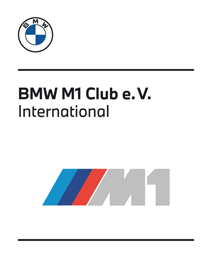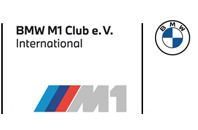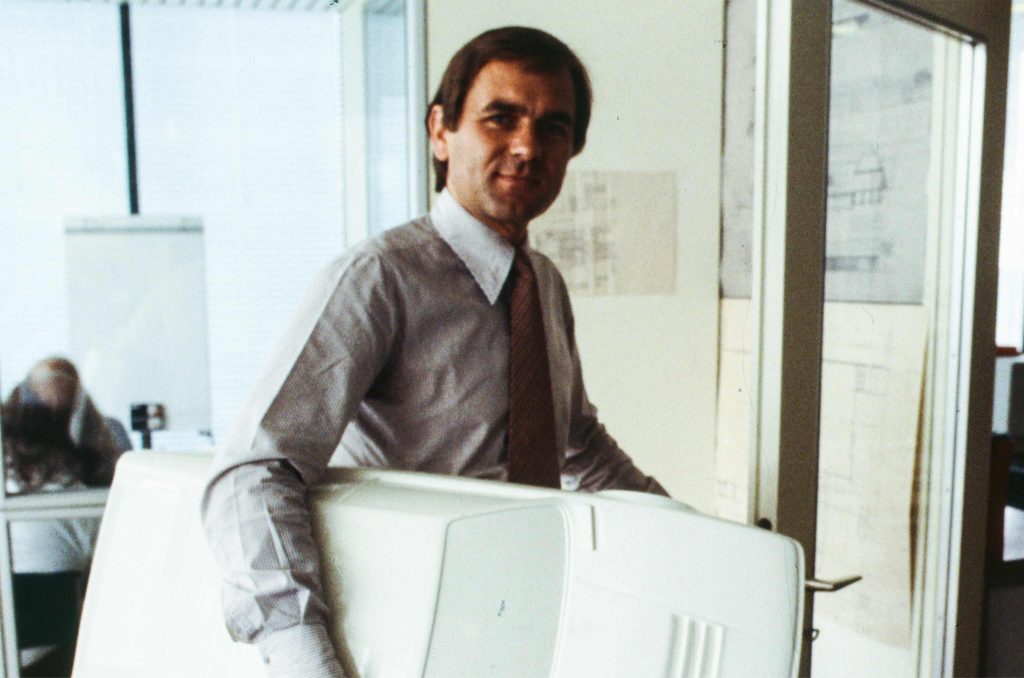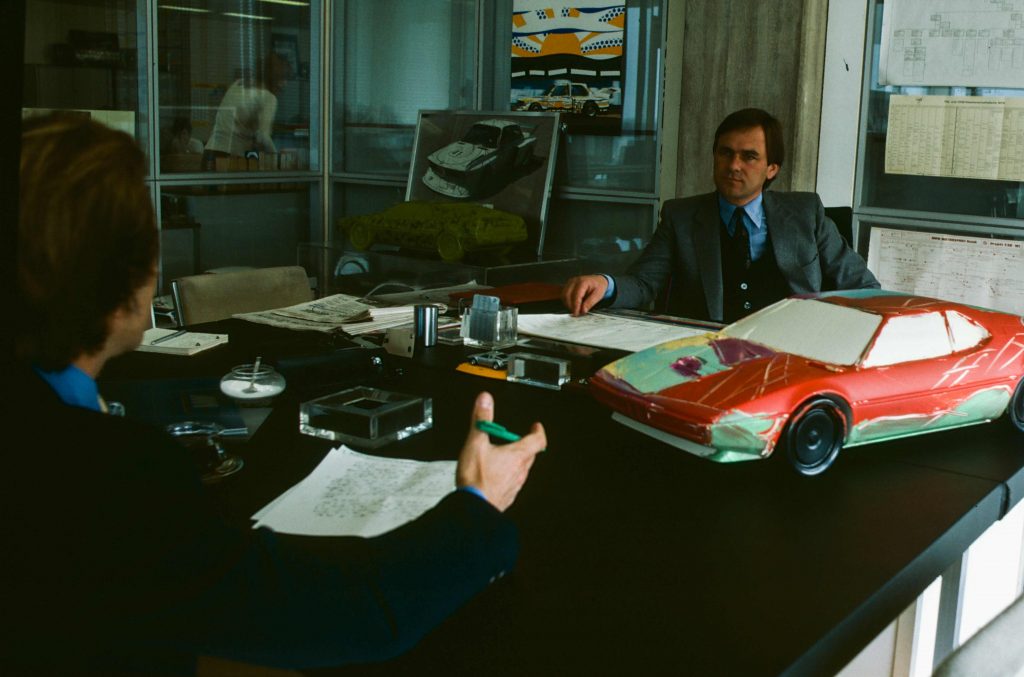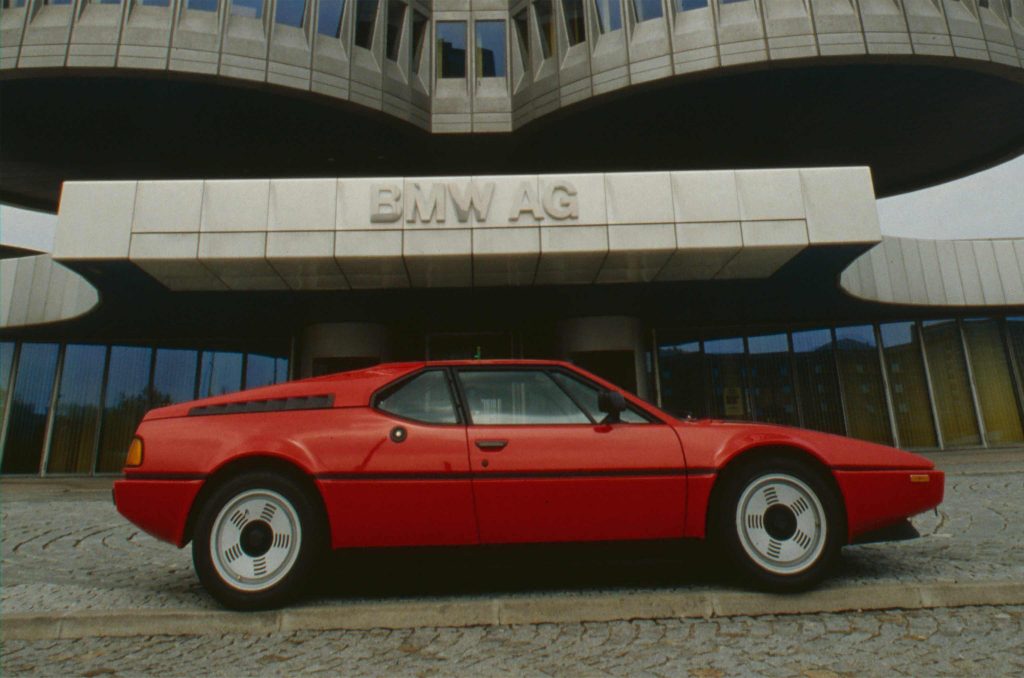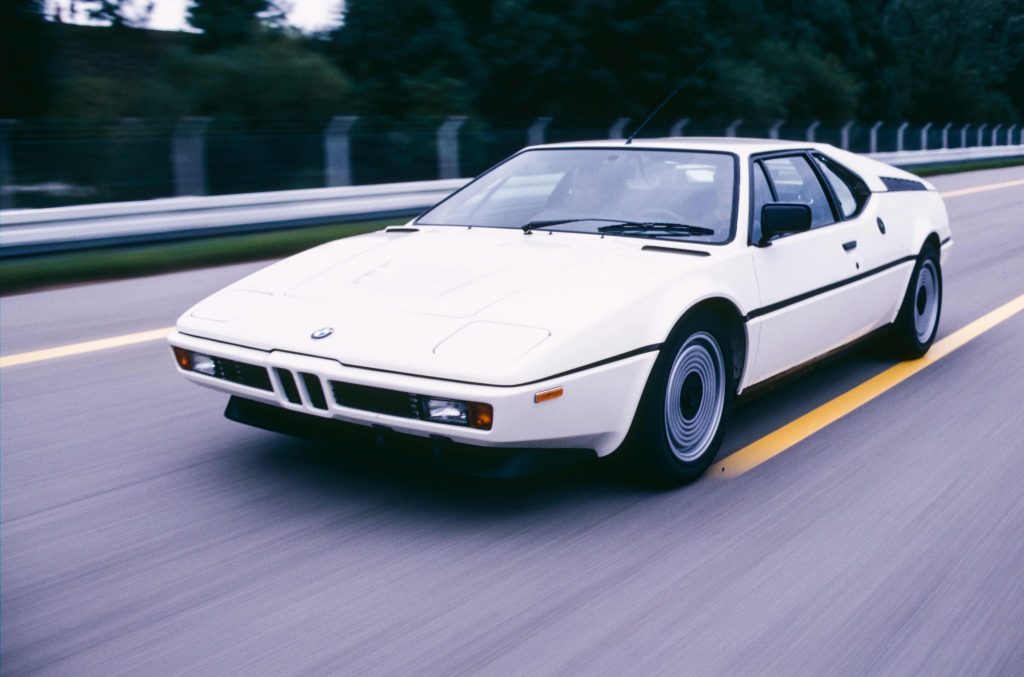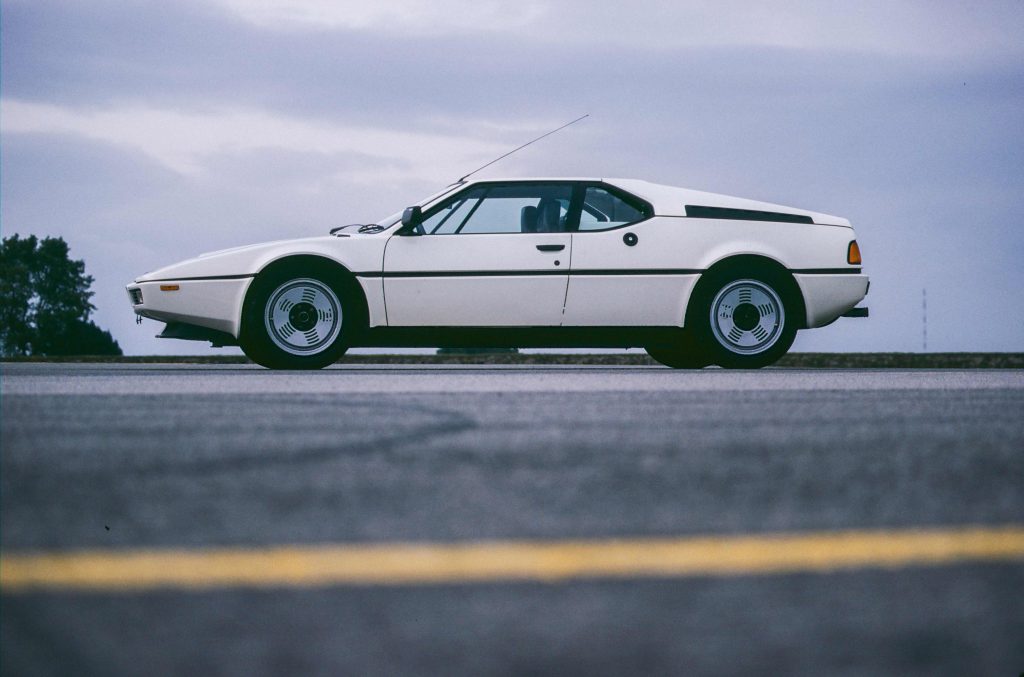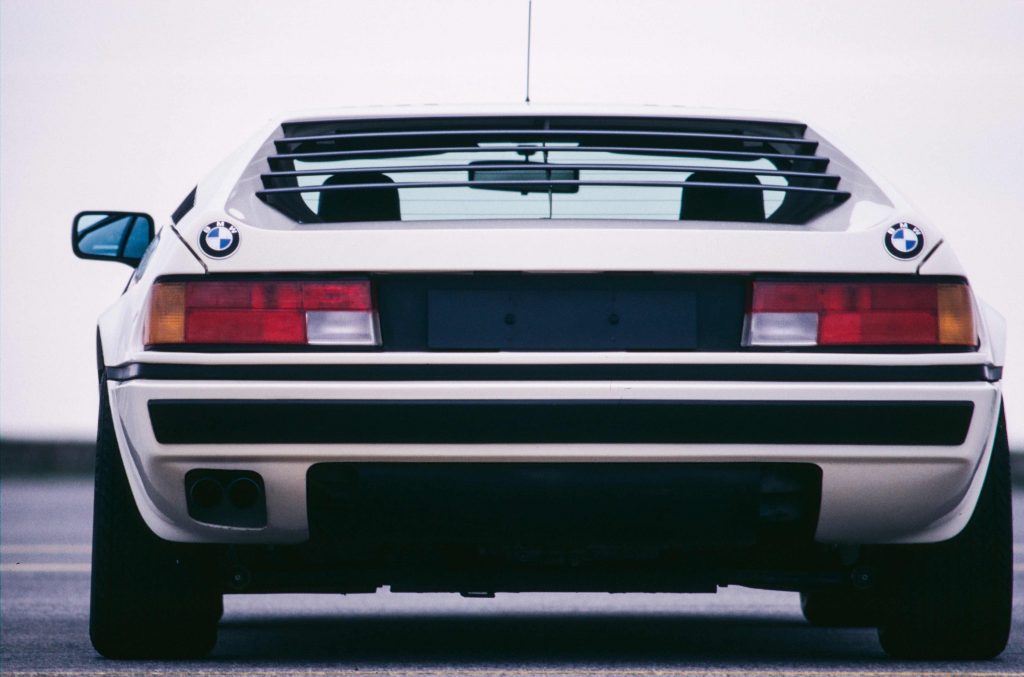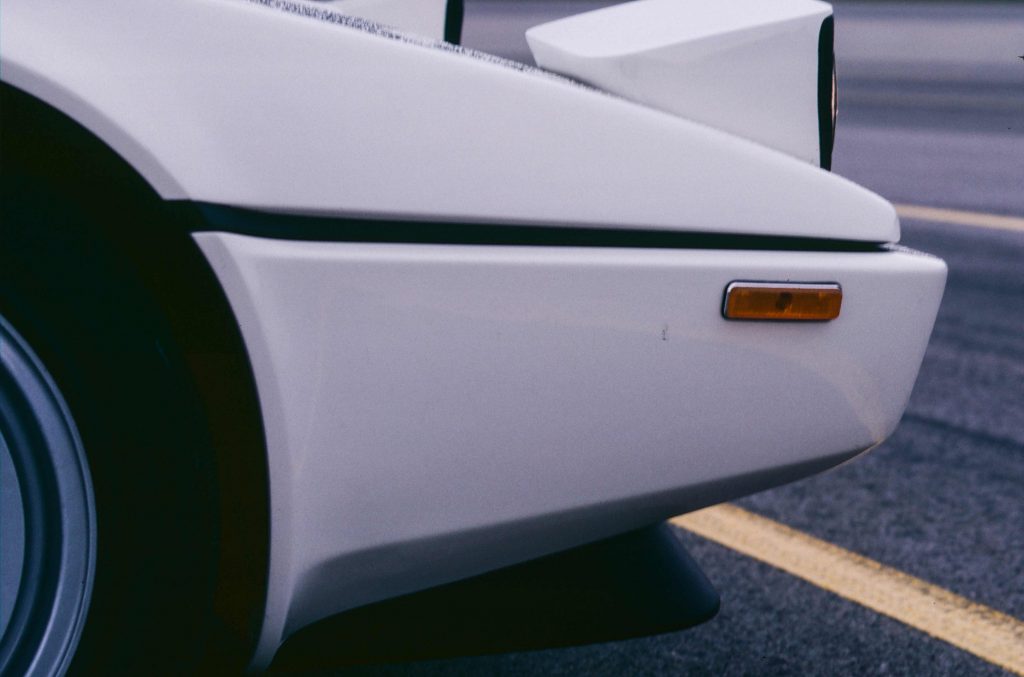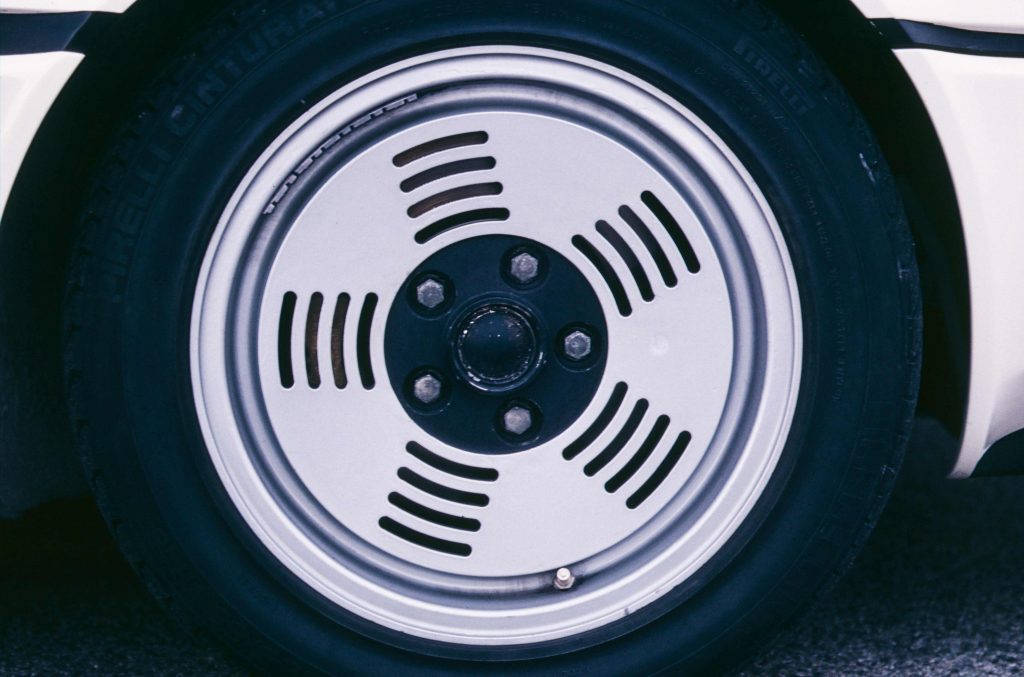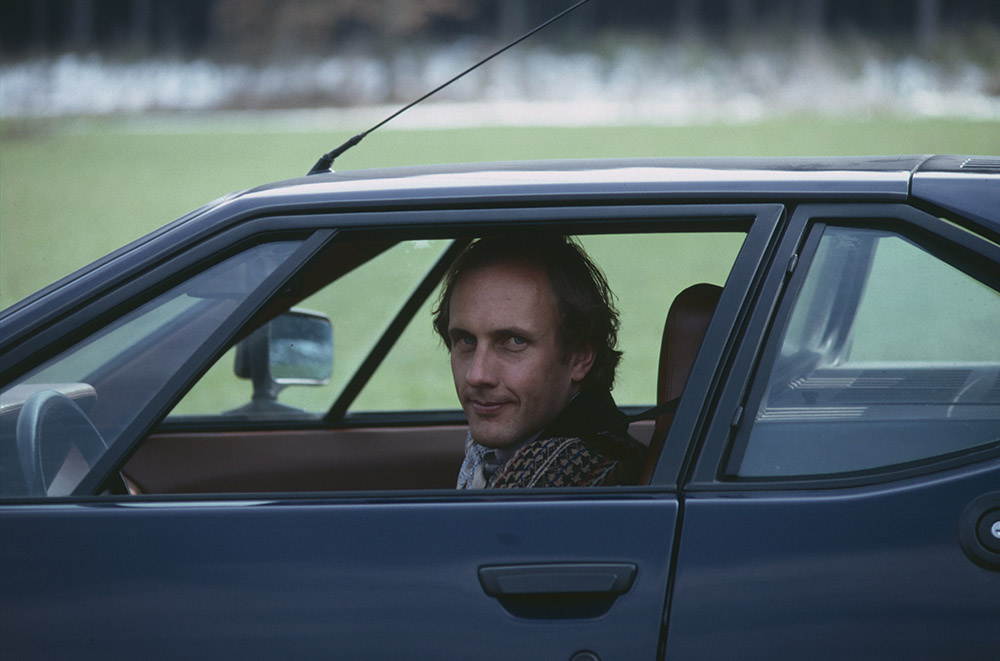The DNA of the M1 – BMW Motorsport GmbH
The story of the M1 begins in early January 1972 with a telephone call from Bob Lutz, then BMW sales director, to Jochen Neerpasch, who had been a successful racing manager at Ford in Cologne since 1969.
The DNA of the M1 – BMW Motorsport GmbH
The story of the M1 begins in early January 1972 with a telephone call from Bob Lutz, then BMW sales director, to Jochen Neerpasch, who had been a successful racing manager at Ford in Cologne since 1969.
Bob Lutz had been an advocate of motorsport from the very beginning and was firmly convinced that an automobile manufacturer with an active and successful participation in motorsport would have marketing and economic advantages over its competitors.
BMW and Jochen Neerpasch quickly came to an agreement and on May 1, 1972, he took the reins of the newly founded BMW Motorsport GmbH, this in the same year of the Olympic Games in Munich and the external completion of the BMW four-cylinder high-rise (inauguration on May 18, 1973).
A look into the future – BMW Turbo Gullwing from 1972
In parallel with the decision to actively involve BMW in racing, the BMW Board of Management also decided in the spring of 1972 to build a BMW mid-engine coupé, the legendary Turbo Gullwing. This was an extremely bold and futuristic project, which was significantly influenced by the Board member responsible for development, Bernhard Osswald, and the new designer, Paul Bracq. The two famous prototypes were finally built by Giovanni Michelotti in Turin.
Bavarian dirndls” dressed up as Martian girls then finally unveiled the 1972 car sensation at its premiere on August 23 at the BMW Museum in Munich. The oil crisis of 1973 was the project’s undoing, however, and all further activities were suspended by the BMW crisis team and the project stopped.
Unobserved, however, the “racing decision” lived on at BMW, and the turbo study was to have a decisive influence on the first generation of motor sports vehicles.
The E26 project – the BMW sports car with race car technology
Under the “development designation E26” and with Martin Braungart in charge of the project, BMW finally develops its first production vehicle for the race track. Pure racing technology coupled with the design genes of the “turbo study” lead to a vehicle concept that is still unique today – the M1.
The project thus inspires in two ways. On the one hand, the M1 was developed with it as a pure-bred racing car and only in succession 400 road versions from this modified and a homologation for the “group 4” approval to allow. On the other hand, however, it is also the cornerstone and first racing and production vehicle of the BMW Motorsport division and thus the basis of a series of fascinating M-vehicles that have left a lasting mark on the identity of the BMW brand and continue to do so to this day.
The history of the M1
As a result of the foundation of the “BMW Motorsport GmbH” in 1972, the new BMW Motorsport team, Jochen Neerpasch, Martin Braungart and Paul Rosche, made various considerations for a Formula 1 and a sports car with racing car technology:
- optimum aerodynamics with a small frontal area and low CW value
- low center of gravity height due to perfectly defined arrangement of the aggregates
- low curb weight with balanced weight distribution
- wheel suspension easily adjustable, designed for kinetic optimization
The concept was finally presented to the BMW Board of Management on September 30, 1975, and at this meeting the order was given to examine the proposed concept with precise investment and cost calculations. This set the starting light to green. The necessary preliminary work could begin.
Since the still new Motorsport GmbH did not have the necessary capacities, the team around Jochen Neerpasch suggested the Lamborghini company in Sant’Agata Bolognese. On October 20, 1975, the BMW Board of Management decided to begin internal development work on a Formula 1 engine and planning for a two-seater mid-engine sports car. Motorsport GmbH was given the task of drawing up a project plan, this was defined with a duration of 5 years and the production of 500 cars per year. Lamborghini was to develop and build the prototypes for the body and floor assembly, while the development of an 8-cylinder production engine was to take place at BMW in synergy with the planned Formula 1 engine.
It was planned to have the complete production carried out at Lamborghini with the engines supplied by BMW and on April 13, 1976 a contract was signed by BMW for the development and production of 2000 E26 sports cars.
The design was awarded by BMW to Giorgetto Giugiaro and his company ItalDesign. The first designs were created in 1976, which took up the formal language of the “Turbo Study” and interpreted it in a new way. A perfect way for the still young Motorsport GmbH to use and continue the positive sporty image already established as the basis of its own identity.
The BMW Team
Jochen Neerpasch (Managing Director) – Martin Braungart (Complete Vehicle Development) – Paul Rosche (Engine Development and Production) – Rainer Bratenstein (Development Engineer) – Hans Erdmann Schönbeck (Sales Director) – Dr. Karlheinz Radermacher (Consulting Expertise as BMW Development Director)
The Lamborghini Team
Dr. Franco Baraldini (Technical Director) – Giampaolo Dallara (Advisor to Franco Baraldini) – Luigi Cappellini (Commercial Director/Finance) – Georges-Henri Rosetti (Owner) – René Leimer (Owner)
The development work M1
BMW quickly realized that the development of a Formula 1 engine could not be realized in terms of both cost and time, and all activities in this regard were halted. The BMW Board of Management then cancelled the contract for 2000 E26 sports cars with Lamborghini and negotiated a new contract for 800 vehicles with a significantly different concept and a BMW four-valve 6-cylinder in-line engine. On October 12, 1976, the new contract was then signed with new specifications for the Type E26/1 with the focus on the following new priorities:
- modified engine to the BMW 6-cylinder engine with four valves
- body made of plastic instead of the steel originally planned
- shorter vehicle length
- shorter wheelbase
- reduced equipment
The goal was thus focused one step further on weight reduction and thus a vehicle clearly intended for motorsport.
Fortunately, ongoing development work was not interrupted throughout the contract negotiations, and a first E26/1 prototype was presented to the BMW Board on May 3, 1977. For this presentation, the BMW board was shown the current vehicles of the direct competitors. Porsche Turbo, Maserati Merak SS and a Tomaso Pantera GTS.
The Board of Management expressly praised the E26/1 prototype, saying that there was a clear positive difference to the competitor vehicles presented. Lamborghini has thus delivered a very good prototype which, with the exception of a slight weight overrun, has fulfilled all the requirements of the new E26/1 specifications. All BMW departments involved recorded optimum satisfaction and fulfillment of Lamborghini’s agreed performance.
However, Lamborghini’s economic situation had deteriorated significantly in 1977, and the E26/1 project was dramatically delayed as a result. Possible solutions were sought to avoid jeopardizing the start of production, even financial advances and even a partial takeover by BMW were considered. In the end, this could not be carried out, as the threat of bankruptcy and thus a total loss had to be considered. The contract with Lamborghini was terminated by BMW on April 19, 1977. A difficult but in retrospect wise decision, bankruptcy and state supervision of Lamborghini unfortunately became fact on August 1, 1978.
The prototypes “P1 to P7” from Lamborghini
A very interesting story is the completion and delivery of the seven E26/1 prototypes, these were delivered to Motorsport GmbH from 13 June 1977, i.e. after BMW had terminated the contract.
As early as the fall of 1976, a 75% completed prototype was brought to Munich, completed at BMW and transported to Pirelli’s test track in Italy for initial testing. It is assumed that this was the P1, which was then presented to the BMW board some time later, on May 3, 1977.
At the beginning of March 1977, four ready-welded frames were inspected by BMW technicians at Lamborghini, another frame was produced at ItalDesign and Marchesi respectively, and two prototype frames were manufactured in Munich.
All prototypes were first equipped with the BMW 4-cylinder engine with supercharging of the type M49/5 C, because the development of the M88 engine at BMW also had to struggle with some difficulties and only towards the end of the year 1977 seven M88 engines were ready built. But more about that in the separate chapter “the BMW 6 cylinder engine M88”.
One of the prototypes (probably the P1) was discovered at the beginning of June 1977 in Sant’Agata Bolognese as a so-called prototype and described in detail in the issue of June 29, 1977 of the Auto ZEITUNG on the cover picture and on 4 full pages. The full-page advertisement “Richt-Linie über die 5er Reihe” from the BMW 518 to the 528 on the 5th page was no coincidence… The famous pictures of this prototype with the BMW kidney glued to the front, the missing BMW logos and the rear license plate PROVA BO 380, this plate was demonstrably also used by Lamborghini for test drives of the Countach and Murciélago, went around the world.
The prototypes in overview
Literature
- Motorbuch Verlag: Cars that made history, BMW M1 by Lothar Boschen
- Delius Klasing: BMW M1, the Story by Jochen Neerpasch / Jürgen Lewandowski
- Motorbuch Verlag: LAMBORGHINI, All models until today by Serge Bellu
- Auto ZEITUNG No. 14 of June 29, 1977, BMW’s new supercoupé
Author of this page: Erich Matter – February 2016
EN check 01.04.2022
